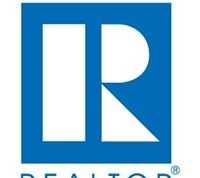Pest Management Insights for Flipping Success: Key Criteria for Your Next Flip
Setting the Stage: Recognizing Pest Pitfalls in House Flips
Experienced flippers understand the obvious risks—foundation cracks, outdated wiring, or a leaky roof. Still, pests are often the silent profit killer in flip projects. Infestations with termites, carpenter ants, or rodents remain hidden until contractors strip back drywall or flooring. In one real scenario, a property appeared solid but post-purchase demos exposed extensive termite damage in key support beams, adding weeks and tens of thousands to the renovation. These hidden problems can drive up costs, stress timelines, and reduce returns faster than most structural flaws. This is why every house flip should begin with a pest inspection checklist as thorough as any structural assessment. Spotting and addressing pest risks early safeguards your budget and timeline before the first hammer swings.
Spot Warning Signs: Red Flags for Pest Infestation Before Purchase
Spotting pest infestations before making an offer can prevent steep expenses and project delays. Investors can use a simple checklist during property tours to flag potential issues.
Top 4 Red Flags of Pest Infestation:
- Small, black droppings in cabinets, attics, or crawl spaces
- Chewed wiring and gnawed wood, often under sinks or in basements
- Dark moisture stains on walls or near baseboards—often a sign of termite or carpenter ant activity
- Accumulations of sawdust-like “frass” inside wall voids or along baseboards
Quick On-Site Checks:
- Use a flashlight to check hidden corners and under cabinets for signs of pests or droppings.
- Tap wooden areas with a screwdriver handle or knuckles. Hollow-sounding or brittle wood may mean termites or carpenter ants have been at work.
- Look for entry points around wiring, plumbing, or gaps along foundation walls.
Buying Tip:
Always request a pest-inspection contingency in your purchase agreement. This gives leverage to negotiate repairs or walk away if the inspection reveals costly hidden damage.
Counting the Cost: Estimating Pest Remediation Early
Getting pest removal numbers right ensures the flip’s budget stays on target. Costs can range widely, so accurate estimates help make smart buy decisions and project true profits.
Typical Pest Remediation Fees:
| Service Type | Typical Cost Range | Frequency |
| General extermination | $200 – $500 | Per visit |
| Termite inspection | $75 – $150 | One-time |
| Localized termite treat. | $500 – $2,500+ | Per area |
| Rodent removal/seal-up | $300 – $1,000 | Per project |
Getting Reliable Bids:
Contact two or three licensed pest-control companies for ballpark estimates based on a basic diagnosis and square footage. Most providers offer free or low-cost inspections, making it easy to develop pre-close treatment budgets.
Sample Spreadsheet Entry:
| Budget Line Item | Est. Cost | Notes |
| Rodent Treatment | $400 | Crawl space, attic |
| Termite Remediation | $1,500 | Main floor, support beam |
| Preventive Sealing | $650 | Foundation, windows |
Link each pest control estimate directly to After-Repair Value (ARV) calculations to get a clear picture of net returns.
Building In Value: Integrating Professional Pest Solutions into Remodeling Budgets
Treat pest control as a must-have, not an afterthought, in every remodeling budget. Create separate line items for preventive and reactive measures to avoid surprise costs mid-project.
Preventive Steps:
- Seal cracks, gaps, and utility penetrations during framing, before drywall goes up.
- Schedule barrier sprays or dusts during demolition and before insulation installation.
This can prevent infestations from returning or spreading as new materials are added.
Reactive Treatments:
- Address current infestations immediately, usually early in the construction timeline for efficient access to problem spots.
- Remove and replace compromised materials (wood, insulation) so repair work isn’t wasted.
Efficiency Tip:
- Coordinate pest treatments alongside demo or rough framing stages. Crews save trips; pests can’t hide behind fresh finishes or insulation.
Pre-emptive pest control almost always costs less than emergency callbacks and last-minute patchwork. Integrate pest management early for fewer headaches, better contractor scheduling, and increased confidence at closing. For a reliable partner, review professional options in pest control St George as a starting point for estimating services.
Sealing Profits with Pest-Aware Strategies
Spotting red flags, estimating removal costs with precision, and building pest prevention into your budget all add up to higher margins and faster timelines. Each step, from initial walk-through to final clean, shields your investment from unplanned losses and preserves the renovation’s quality. In today’s flipping market, investors who factor pest strategies into their process gain a clear edge. Make every flip smarter by adding pest checks and solutions to your core criteria. Fight unseen threats before they eat away at profit, and keep your renovation goals on target.















